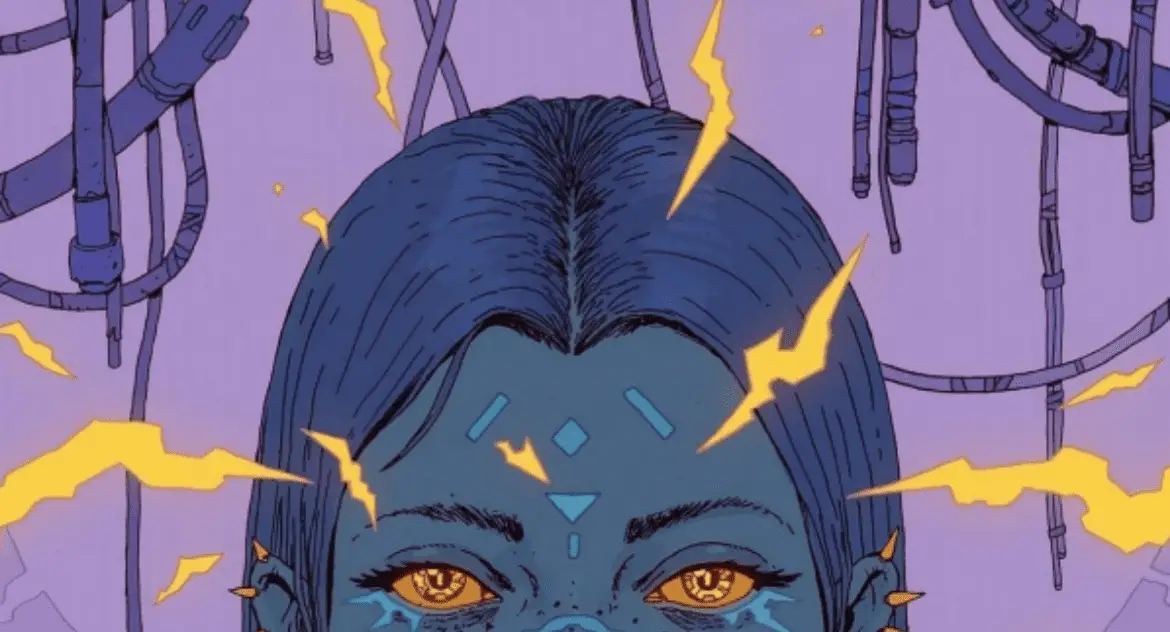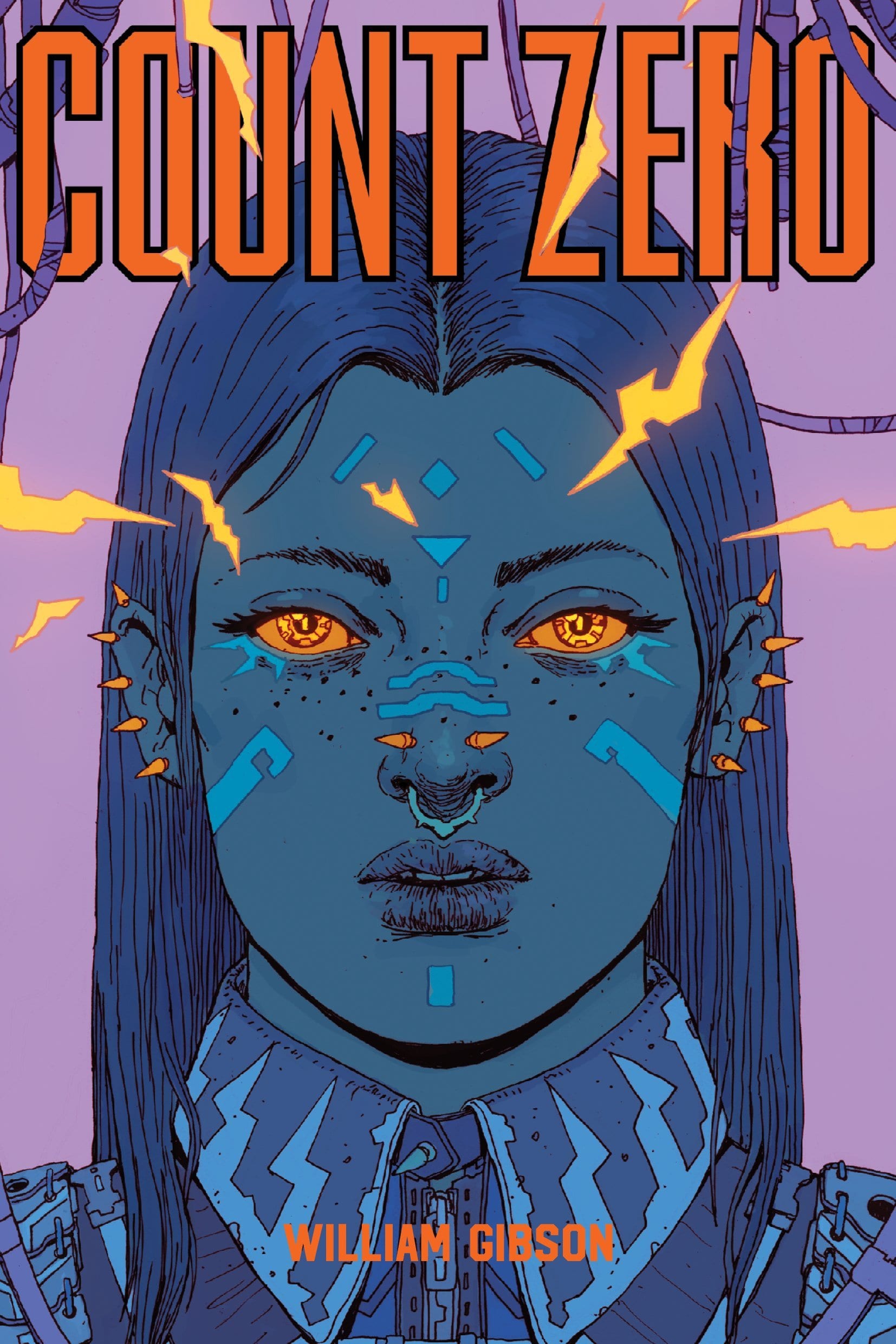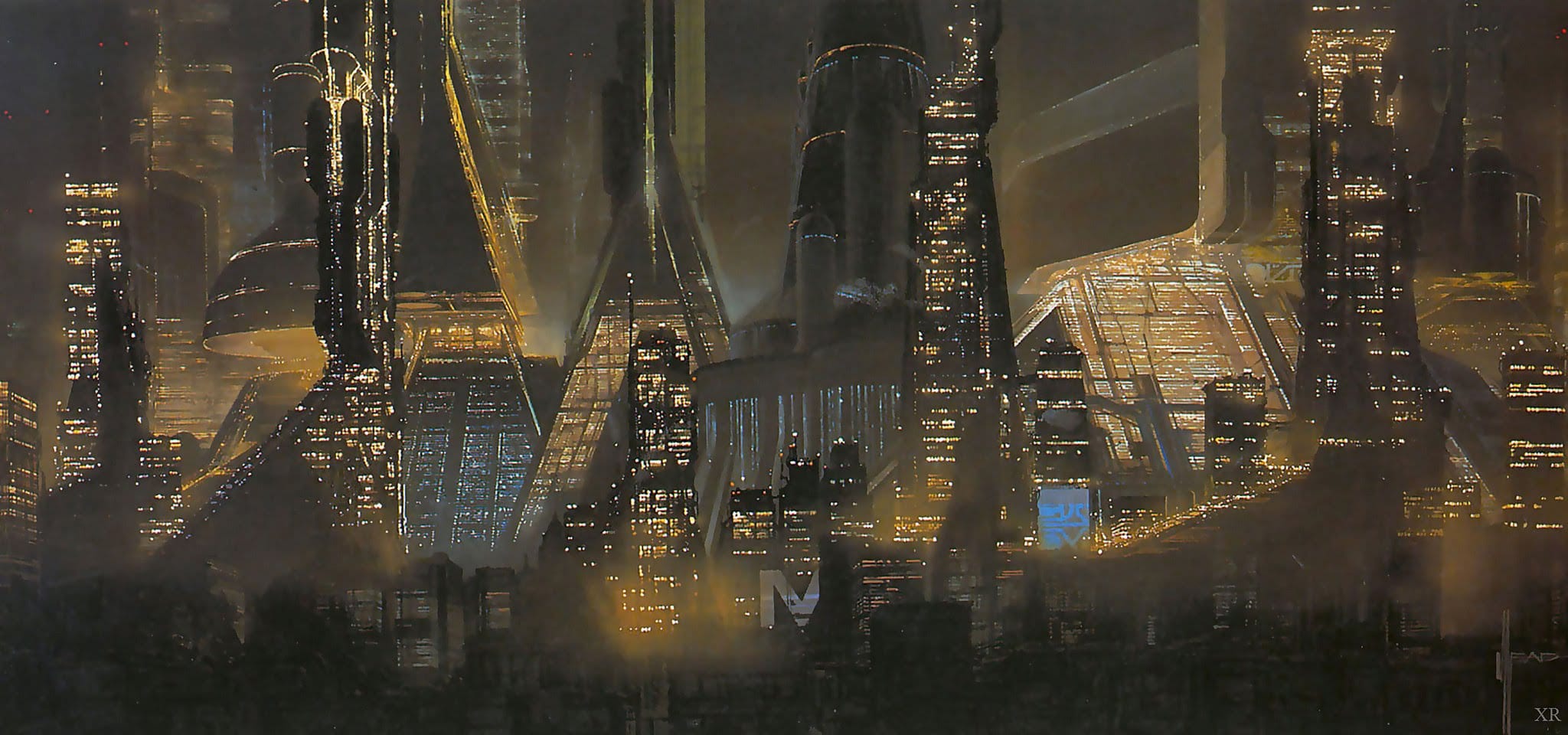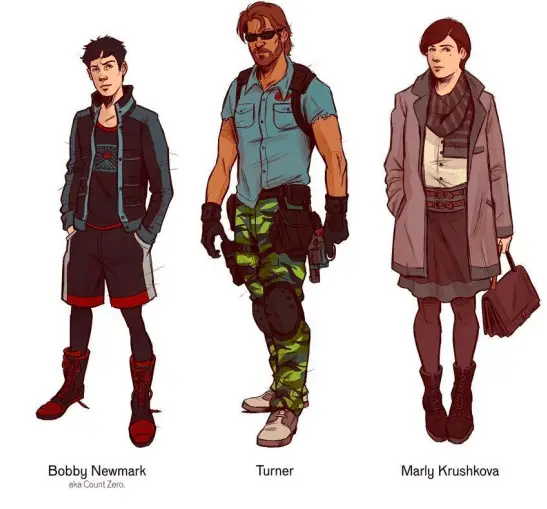The Neuromancer Sequel Steps up the Cyberpunk Story
Count Zero is the second novel in William Gibson’s Sprawl trilogy. Following after Neuromancer, it’s clear that this is a different beast entirely. In many ways, it is an evolution of the raw and visceral style that the cyberpunk godfather had crafted in his debut novel.
Count Zero is The Sequel Everyone was Waiting For
Released in 1986, Count Zero is the sequel which many thought would not come. Gibson himself admitted he had no plans to return to the world of the Sprawl; the closing sentence of Neuromancer was intended to be a severing of ties. As iconic as Neuromancer is, Count Zero exhibits the maturing of Gibson’s worldbuilding and even that of the cyberpunk genre itself. The novel graduates from one perspective to three differing characters each on their own narrative which intersects and intertwines in a complex web of narratives.
The plot of the novel is not a direct sequel to Neuromancer, but the after effects of what Case and Molly did at Villa Straylight are starting to have consequences elsewhere in the world. Readers could potentially dive in with no prior knowledge of the world of the Sprawl. However, readers of Neuromancer will enjoy this far more as they take their knowledge and dive deeper into the world of Gibson’s Sprawl.
The first of the three main characters is Turner, a corporate mercenary that’s a great example of the archetype that Gibson already explored in his short story New Rose Hotel, which also was made into a film. In the short story, Turner is hired to facilitate the move of a highly regarded researcher, Christopher Mitchell from one mega-corporation to the other. His story begins in the aftermath of a job gone horribly wrong, leaving Turner in need of reconstructive surgery and a sabbatical in Mexico to mull over his past. Although it’s not long before his partner Conroy seeks him out for another job.
The job? To get Christopher Mitchell from Maas Corporate to Hosaka, their rival corporation.
Megacorporations Own Everything, Especially You
In the world of the Sprawl, megacorporations practically own their employees, and a high ranking employee jumping ship to another corporation is a huge breach of company policy. Here’s where Turner comes in, as he’s sent with a team to extract the researcher and facilitate the move.
Things take a bad turn quickly, and Turner needs to improvise. He’s left with Angie Mitchell, the daughter of the man who he was arranged to collect. It soon becomes clear that there is more at stake than he could’ve first anticipated. Angie is not just a normal girl, and this is far from a routine job.
Turner is an interesting character to see within the world of the Sprawl. His is a different world left unexplored within Gibson’s debut novel. This is a dangerous world of corporate espionage where men like Turner are hired to commit these illegal acts for a high price. These soldiers of fortune are incredibly disciplined and have a lack of morals which makes them highly sought after by the megacorporations of the Sprawl. Dangerous tools for dangerous times.
It’s through Turner’s perspective that we see a more action-focused story play out. Perhaps that’s why Micheal Mann, director of such films as Heat, Collateral and Public Enemies, purchased the rights to Count Zero. The increase in action from Neuromancer to Count Zero would make for far easier translation to film. Although without a Neuromancer film, it Count Zero will languish in Development Hell. We can only hope that we might see Gibson’s work come to the big screen in the cyberpunk future.
Who is Count Zero?
The second character has a more familiar style. Bobby Newmark goes by the handle “Count Zero”. He’s an aspiring console cowboy trying to carve out a name for himself on the rough streets of Barrytown, New Jersey.
Some associates loan Bobby a piece of black market software for testing. But **SURPRISE!**, once he jacks into the Matrix, he’s almost killed by it. The database he tries to infiltrate is covered in black ICE, some of the most formidable data defense networks around. Before the ICE is able to fry Bobby, he’s saved by the image of a girl who looks surprisingly like Angie Mitchell.
After the failed infiltration, Bobby is quickly tries to put distance between him and his home. Knowing that whoever owned that database will be honing in on his last known position quick.
He soon runs into a group who are aware of changes within cyberspace. They’ve witnessed the appearance of “Voodoo Gods” within the Matrix. Here, Gibson begins to craft occult themes within the novel. The Loa gods and their cryptic machinations begin to play out, a plan decades in the making which only now is starting to fall into place.
With Bobby, we see the familiar terminology that we’ve learned from our time with Case, although now it’s through the eyes of a rookie. It puts into perspective just how skilled Case was. Bobby’s naive attempt to steal some data highlights just how dangerous this line of work is, not to mention the skills needed to survive in both cyber and meat-space.
Bobby’s teen angst is well-suited within the harsh world of the Sprawl, offering a fresh perspective. It’s also through Bobby which we get to see the streets of the Sprawl and the day-to-day lives of people trying to get by and climb their way up out of poverty which pulls them down. It’s a grim reality which will hit home for some, but Gibson uses this to craft a narrative which is hard hitting and fast paced throughout.
Count Zero Really Showcases the “High-Tech Lowlife”
The final “main” character in Count Zero is Marly Krushkova, an art expert who once operated a gallery in Paris until her once lover got her caught up in an embezzlement scandal involving forgeries. Years after this scandal, Marly is contacted by a reclusive oligarch named Josef Virek, who appears to her in virtual reality via an extremely advanced simstim link.
Virek seeks to use his wealth to locate the creator of mysterious boxes which appear to be similar to those created by the artist Joseph Cornell. Part of Marly’s narrative holds relevance to this day, highlighting the major wealth gap that exists throughout the world and just how it makes those in power desensitized from the real world.
For an instant, she stared directly into those soft blue eyes and knew, with an instinctive mammalian certainty, that the exceedingly rich were no longer even remotely human.
This wealth disparity is even more pronounced within the world of the Sprawl. The super rich and the colossal megacorporations that exist within the world have become so powerful and so far reaching that their influence stretches across the globe and has profound effects on all walk of life — Gibson’s futurecrafting rings true to this day.
Seeking to find the mysterious creator of these pieces of art, Marly soon finds that she is being followed by Virek’s men. As she begins to doubt her wealthy benefactor and his motives, a cat and mouse game ensues. Marly tries to balance keeping ahead of Virek’s men while also keeping their trust and ensuring she is kept alive. In her hunt for the elusive artist/creator, Marly is taken to the far-flung places of the world. It’s through her narrative that we see the world outside the Sprawl and even the space outside of the world itself as the mystery leads itself skyward.
William Gibson Weaves Three Narratives into One Story
At first, all three of these narratives threads shift and weave around each other in a seemingly unconnected way, but as you delve deeper into each, the connections of a well-worked and expansive web that is expertly crafted. It’s clear that Gibson had grown and become more experienced as a writer when comparing Count Zero to Neuromancer.
Is it brave that Gibson didn’t follow up Neuromancer with a direct sequel? With the awards and reception following his first novel, it might have been easy to take those characters and embark on another adventure. With Count Zero, Gibson set out to create something more complex and mature than the raw debut of Neuromancer. Don’t worry, though. There’s enough detail in the book to ensure it doesn’t feel completely distanced from its predecessor.
For lovers of cyberpunk and Neuromancer, this sequel is a must read. It’s the bridging piece in the very pivotal Sprawl trilogy, and it’s here that Gibson creates something which is much more than the sum of their parts.
Do yourself a favour: pick up Count Zero, and read it.





